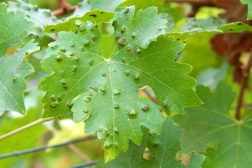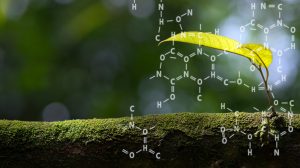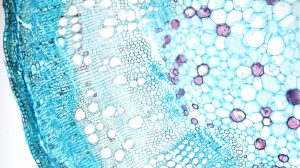Hydrogen peroxide
(Science: chemical) hydrogen peroxide is produced by vertebrate phagocytes and is used in bacterial killing (the myeloperoxidase halide system).
You will also like...

Plant Cell Defense
Plants protect themselves by releasing hydrogen peroxide to fight against fungal invasion. Another way is by secreting compounds, such as lignin, ethylene, galls, and tannins. Find out how these mechanisms protect the plants from pathogens...

Plant Cells vs. Animal Cells
Plant cells have plastids essential in photosynthesis. They also have an additional layer called cell wall on their cell exterior. Although animal cells lack these cell structures, both of them have nucleus, mitochondria, endoplasmic reticulum, etc. Read this tutorial to learn plant cell structures and their roles in plants...

Cell Structure
A typical eukaryotic cell is comprised of cytoplasm with different organelles, such as nucleus, endoplasmic reticulum, Golgi apparatus, mitochondria, and so on. The cellular contents are surrounded by a double layer, cell membrane. These cellular structures and cell junctions are elaborated in this tutorial...

Effect of Chemicals on Growth & Development in Organisms
Plants and animals need elements, such as nitrogen, phosphorus, potassium, and magnesium for proper growth and development. Certain chemicals though can halt growth, e.g. herbicides in plants, or affect normal physiological activities, e.g. alcohol. For more info, read this tutorial on the effects of chemicals on plants and animals...

Cell Biology
The cell is defined as the fundamental, functional unit of life. Some organisms are comprised of only one cell whereas others have many cells that are organized into tissues, organs, and systems. The scientific study of the cell is called cell biology. This field deals with the cell structure and function in detail. It covers..
